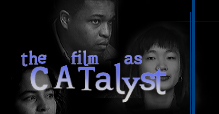contributed by Frances E. Kendall
Privilege, particularly White or male privilege, is hard to see for those of us who were born with access to power and resources. It is very visible for those to whom privilege was not granted. Furthermore, the subject is extremely difficult to talk about because many White people don’t feel powerful or as if they have privileges that others do not. It is sort of like asking fish to notice water or birds to discuss air. For those who have privileges based on race or gender or class or physical ability or sexual orientation or age, it just isit’s normal. The Random House Dictionary (1993) defines privilege as “a right, immunity, or benefit enjoyed only by a person beyond the advantages of most.” In her article, “White Privilege and Male Privilege,” Peggy McIntosh (1995) reminds us that those of us who are white usually believe that privileges are “Conditions of daily experience…[that are] universally available to everybody.” Further, she says that what we are really talking about is “unearned power conferred systematically” (pp.82-83).
For those of us who are White, one of our privileges is that we see ourselves as individuals, “just people” part of the human race. Most of us are clear, however, that people with skin other than white are members of a race. The surprising thing for us is that even though we don’t see ourselves as part of a racial group, people of color generally do see us in that light.
So, given that we want to work to create a better world in which all of us can live, what can we do? The first step, of course, is to become clear about the basics of white privilege, what it is and how it works. The second step is to explore ways in which we can work against the racism of which white privilege is such a major foundation stone.
For further reading
Kendall, Diversity in the Classroom, pp.45-49
Kivel, Uprooting Racism., pp.28-35
McIntosh, White privilege and male privilege
Terry, For Whites Only






